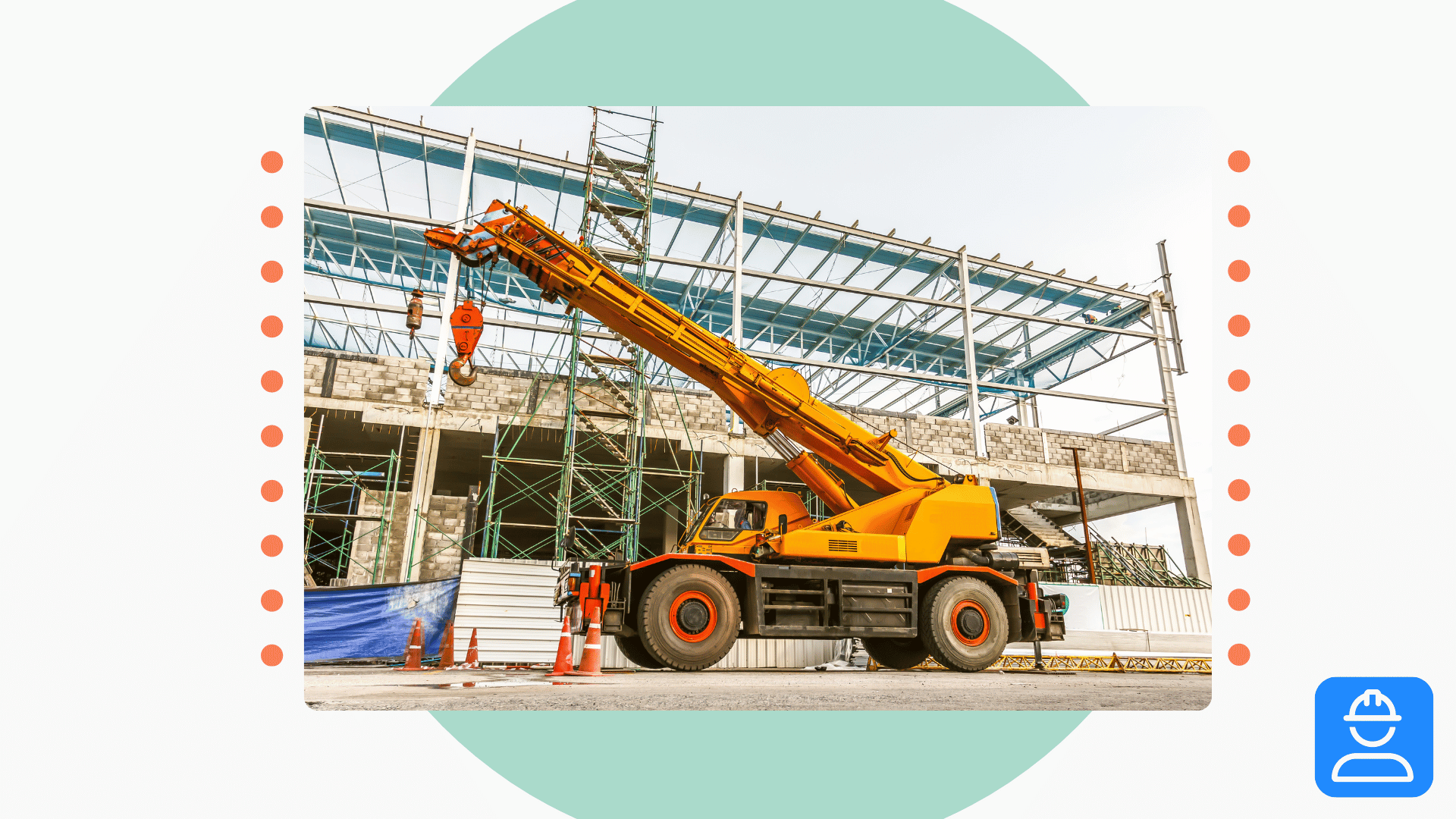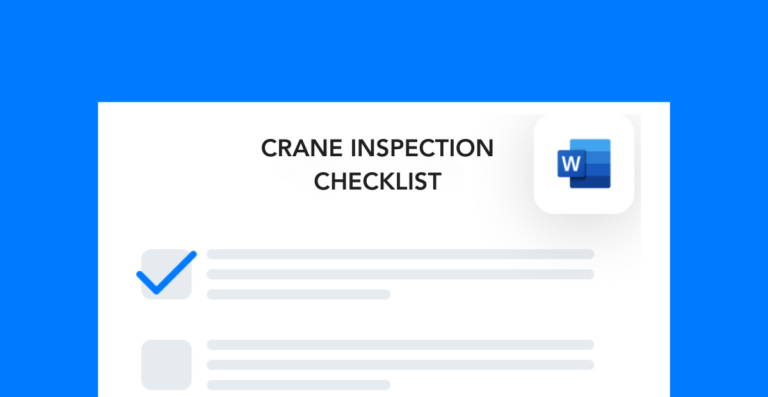Like all heavy equipment, cranes pose a significant threat to workplace safety. With this crane safety toolbox talk, you can teach your team what hazards to look out for and how to control them. Add it to your rotation of discussion topics to keep safety top of mind.
Free checklist!
Download this free crane inspection checklist for your team to use before each equipment use. It complements your crane safety toolbox discussion.
Crane safety toolbox talk overview
Operating heavy equipment is one of the more dangerous roles within a company. So, it’s important that your workers know how to manage risks effectively. The content in this toolbox talk on crane safety will cover:
- Main crane safety risks to consider
- Ways to control risks
Ongoing training through safety discussions and periodic review of OSHA’s crane safety standard should help you improve your accident rates by incorporating crane safety toolbox talks regularly.
Crane safety risks
There are three main crane safety risks to control:
- The stability of the load you’re lifting (balance, weight, security).
- Overhead hazards like power lines, traffic lights, platforms, and other structures in the air.
- Electrical hazards that can cause explosions, fires, and electrocution.
Your behavior also plays a big role in workplace safety. Incorporating crane safety toolbox talks helps identify risks and control them before you start work, preventing workplace injuries.
Best crane safety practices
The best way to prevent accidents is to thoroughly inspect your crane equipment and assess the situation before you start operating it. It’s easier to manage crane safety risks when you’re stationary versus in motion. Here are some of the crane operation best practices you should follow:
- Perform pre-operational checks on the controls, hooks, cables, cabin, and more.
- Notify management of any equipment issues you come across in your inspection.
- Double check the crane’s load capacity and make sure you don’t exceed it.
- Verify where the overhead hazards (if any) are and take care to avoid them.
- Only use designated equipment to rig up the machine and secure the load.
- Make sure your communication equipment is on and functioning properly.
- Set up an exclusion zone to block off the work area.
Following these heavy equipment safety tips will make it easier for you to focus on eliminating hazards, not just controlling them. Taking accountability for not only your safety, but the safety of the people around you, is key to preventing crane accidents on the job. Including crane safety toolbox talks can be a critical part of that accountability.
As always, if you do come across any equipment issues, don’t wait and try to repair them yourself. Let someone on the leadership team know so we can properly red tag the crane and make sure it’s safe before putting it back into use.




